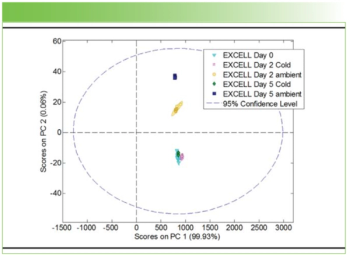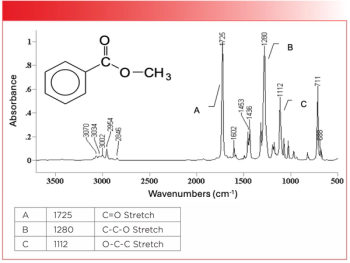Key Points
- Portable infrared (IR/MIR) spectrometers can predict soil properties as accurately as lab models when using calibration transfer methods.
- Partial least squares regression (PLSR) outperforms other modeling techniques for both vis-NIR and IR/MIR soil spectral data.
- Spiking with extra weights was the most consistent calibration transfer method, outperforming EPO and DS approaches.
- IR/MIR spectroscopy provides stronger, more sensitive spectral signatures than vis-NIR for soil property estimation.
In a new study published in Soil and Tillage Research, scientists from Mississippi State University have demonstrated that portable mid-infrared (MIR) spectrometers can estimate soil properties as accurately as conventional laboratory spectrometers when paired with appropriate calibration transfer techniques. This breakthrough could reduce the time and cost associated with traditional soil analysis methods, expanding opportunities for real-time, in-field soil monitoring.
The study, led by F.H.C.A. Silva, Nuwan K. Wijewardane, Michael S. Cox, and Xin Zhang, involved 474 soil samples collected from 36 benchmark soil series across Mississippi (1).
Researchers from both the Department of Agricultural & Biological Engineering and the Department of Plant and Soil Sciences focused on three key goals: assessing data preprocessing and modeling techniques, comparing VisNIR and MIR spectroscopic methods, and exploring calibration transfer methods to bridge lab and portable MIR instruments (1).
MIR Outperforms Vis-NIR in Sensitivity and Accuracy
Soil samples were scanned using five spectrometers, including both laboratory and portable models, across the visible-near infrared (Vis-NIR: 350–2000 nm) and mid-infrared (MIR: 5000–500 cm−1) regions. The research found that MIR spectroscopy consistently outperformed Vis-NIR, largely due to its ability to detect stronger molecular vibrational bands (1,2). “The transition strength of MIR spectral signatures may be a thousand times greater than that of NIR signatures,” the authors noted, referencing earlier work by other researchers (1).
Despite the MIR region’s superior performance, laboratory MIR spectrometers have traditionally been bulky and costly, limiting their use outside of controlled environments. Portable MIR instruments promise more flexibility, but they require validation against lab standards to ensure reliability (1).
PLS Regression Leads Modeling Techniques
Four preprocessing techniques—no preprocessing, Savitzky-Golay smoothing, standard normal variate (SNV), and multiplicative scatter correction (MSC)—were tested alongside four modeling algorithms: partial least square regression (PLSR), support vector regression (SVR), random forest (RF), and artificial neural networks (ANN) (1).
The team’s results showed that PLSR outperformed all other modeling techniques across both VisNIR and MIR datasets. Interestingly, non-preprocessed spectra produced reliable models comparable to those using scatter-correction or smoothing techniques. "Preprocessing was not required to calibrate robust and reliable models," Silva and colleagues emphasized (1).
Calibration Transfer: Making Field Instruments Lab-Ready
One major challenge identified in soil spectroscopy is transferring calibration models developed on laboratory spectrometers to portable instruments due to differences in sensor setup, operating conditions, and hardware (1,2).
To address this, the study evaluated four calibration transfer techniques within the MIR region: external parameter orthogonalization (EPO), direct standardization (DS), slope bias correction (SB), and spiking with extra weights. Among these, spiking—augmenting calibration datasets with secondary instrument spectra—consistently provided the best results. EPO and DS showed more variability, highlighting the importance of choosing the right transfer approach (1).
Implications for Field Soil Analysis
With portable MIR instruments validated through calibration transfer, farmers, agronomists, and environmental scientists could soon conduct in-field soil analyses with the same confidence as laboratory testing. This advancement reduces the need for extensive sample collection and preparation, speeding up soil health monitoring and management decisions (1).
Silva, Wijewardane, Cox, and Zhang’s findings represent a significant step toward democratizing soil spectroscopy. Their work supports the idea that high-quality soil data doesn’t have to come with the high costs and logistical hurdles of laboratory-only solutions (1,2).
References
(1) Silva, F. H. C. A.; Wijewardane, N. K.; Cox, M. S.; Zhang, X. Assessment of Different VisNIR and MIR Spectroscopic Techniques and the Potential of Calibration Transfer between MIR Laboratory and Portable Instruments to Estimate Soil Properties. Soil Tillage Res. 2025, 251, 106555. DOI: 10.1016/j.still.2025.106555
(2) Piccini, C.; Metzger, K.; Debaene, G.; Stenberg, B.; Götzinger, S.; Borůvka, L.; Sandén, T.; Bragazza, L.; Liebisch, F. In‐Field Soil Spectroscopy in Vis–NIR Range for Fast and Reliable Soil Analysis: A Review. Eur. J. Soil Sci. 2024, 75 (2), e13481. DOI: 10.1111/ejss.13481






